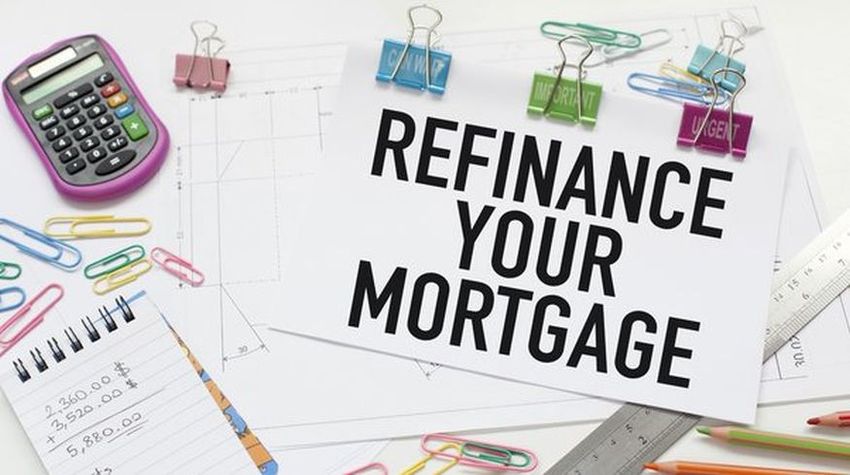
Do you want to refinance your mortgage? There are many factors to consider when deciding whether it’s worth it or not. Let’s go over all the pros and cons of refinancing your mortgage, plus the 4 steps you can take to get it done right.
What is mortgage refinancing?
Refinancing your mortgage is when you fully pay off your mortgage by taking out another loan. The aim is to get more favourable terms on your new mortgage, such as lower interest rates, access to your home’s equity, or a different type of mortgage altogether (i.e. fixed rates instead of variable). In most cases, you’ll need to have at least 20% of your mortgage paid off already, and you’ll likely be hit with prepayment penalty charges.
The Pros of Refinancing Your Mortgage
So why do people consider refinancing their mortgage? Here are 3 of the main reasons:
- It could save you money.
The biggest reason someone may want to refinance their mortgage is the potential to save money over the long term. This usually happens when you can get a lower interest rate on the new mortgage. There’s one major thing to keep in mind when making this calculation though – the prepayment penalty. Paying off your mortgage early will usually incur some hefty charges, so you need to factor those into the total savings in order to make sure you come out on top.
- Consolidating debt.
If you have multiple sources of high interest debt, sometimes debt consolidation is an option to help you make the repayment not only easier, but also cheaper in the long run. By refinancing your mortgage with a larger loan than the original, you can use the extra cash to pay off your other debts in full. Then you’ll continue to pay off your mortgage at the lower interest rate, and only to one place.
- Access the equity in your home.
The equity in your home is the part of the cost that you’ve paid off already. If you refinance your mortgage or open a Home Equity Line of Credit (HELOC), you can gain access to this equity. If you do this, it basically acts as a low interest secured loan you can use whenever you need it. This could be useful for things like unexpected medical expenses or tuition.
The Cons of Refinancing Your Mortgage
But if refinancing your mortgage were a perfect solution, everyone would do it… so what’s the catch?
- You can be hit with major penalties.
The extra fees associated with refinancing your mortgage are often the tipping point when it comes to deciding whether or not it’s worth it for you. The major issue is prepayment penalties. Since you need to pay off your previous mortgage to refinance it, you’ll need to pay above the agreed-upon monthly payments that are in your contract. Your lender can charge a penalty when you choose to do this, since it’s essentially taking away interest payments from them.How much your prepayment penalty will cost depends on several factors, including: how much is left on your mortgage – both dollar amount and time, your interest rate, and the method used to calculate your fee. There are two main methods your lender can use to calculate your prepayment penalty. The first is simply charging you 3 months’ interest on what you owe. But they can also use interest rate differential, whichever option is higher.
- Debt consolidation or accessing equity aren’t always financially healthy decisions.
While saving money on your mortgage can seem like a financially healthy thing to do, there are some concerns that come up when talking about consolidating your debt or taking out secured loans. While debt consolidation can make it easier to track your loans and save you even more on interest – you have to be absolutely sure you can make the new monthly payments. Taking out a loan to pay off another loan could turn into a vicious cycle instead of addressing the actual problem: debt.And while your home equity can give you some impressively low interest rates on loans, you’re putting your house at risk if you aren’t able to pay back what you borrow.
How Do You Refinance Your Mortgage?
So after considering all the pros and cons of refinancing your mortgage, what are the steps you need to take to get started?
Step 1: Decide if refinancing your mortgage is right for you.
Learning about refinancing your mortgage is one thing, but it’s important to look at your own situation and figure out if it’ll work for you. A good place to start is with your current mortgage – what are the terms that you agreed to? It may be beneficial to talk to a licensed mortgage broker. They’ll be able to give personalized and professional advice based on your own unique situation.
Step 2: Shop around for rates.
Once you’ve decided that you want to move forward with refinancing your mortgage, get an idea of what current mortgage rates are on the market. Offered rates tend to rise and fall with the market, since they’re based on the prime rate in Canada. If you see that the current rates are higher than what you have in your mortgage contract, you may want to wait things out to see if you can get a better deal.
Step 3: Calculate the cost.
If you find a better mortgage rate, the next step is to figure out what (if any) prepayment penalty you’ll owe. This is a key part that will determine whether you’re actually going to save any money or not. Compare the total cost over the cost of your mortgage based on your current term and the new term you’re hoping to take on. Remember to include any prepayment penalty. If the penalties outweigh the savings, then you may want to wait until your mortgage is up for renewal to switch lenders or change your terms.
Step 4: Apply and review the new terms.
Once you’re ready to finalize everything, speak with your lender (or mortgage broker) and get the new agreement signed. You’ll also need to break the previous contract, which will require paperwork of its own (your new lender will generally take care of it). You’ll be guided through this by your lender or mortgage broker, so don’t be afraid to ask questions and take your time when reviewing the new terms. If everything looks good? Then apply for your new mortgage and start saving!









